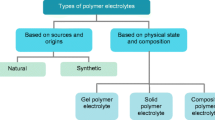Abstract
Dynamic windows based on the reversible electrodeposition of metals are the promising alternatives to those based on other technologies such as electrochromic materials. In this article, we use spectroelectrochemistry to study Cu and Pb electrodeposition and dissolution as related to dynamic window electrolytes. The presence of Cl− in the aqueous electrolyte accelerates the deposition and dissolution processes, and leads to the formation of Cu–Cl equilibria that evolve during electrode cycling. The electrolyte only supports reversible metal deposition after cycling, a process known as electrolytic conditioning. We demonstrate that the conditioning process increases the concentration of Cu–Cl complexes in the electrolyte, which facilitates reversible and kinetically facile electrodeposition. The conditioned electrolyte enables the construction of 25 cm2 dynamic windows harnessing reversible metal electrodeposition that exhibit uniform tinting, minute-order switching times, and high optical contrast.
Graphical Abstract
Understanding electrolyte dynamics is key to constructing 25 cm2 dynamics windows with electronically controlled transparency based on the reversible metal electrodeposition of Pb and Cu.













Similar content being viewed by others
References
Schlesigner M, Paunovic M (2010) Modern electroplating, 5th edn, Wiley, Hoboken
Xu W, Wang J, Ding F, Chen X, Nasybulin E, Zhang Y, Zhang J (2014) Lithium metal anodes for rechargeable batteries. Energy Environ Sci 7:513–537
Barile CJ, Spatney R, Zavadil KR, Gewirth AA (2014) Investigating the reversibility of in situ generated magnesium organohaloaluminates for magnesium deposition and dissolution. J Phys Chem C 118:10694–10699
Li Q, Bjerrum NJ (2002) Aluminum as anode for energy storage and conversion: a review. J Power Sources 110:1–10
Park C, Seo S, Shin H, Sarwade BD, Na J, Kim E (2015) Switchable silver mirrors with long memory effects. Chem Sci 6:596–602
Ziegler JP, Howard BM (1995) Optical properties of reversible electrodeposition electrochromic materials. Sol Energ Mat Sol C 39:309–316
Ziegler JP (1999) Status of reversible electrodeposition electrochromic devices. Sol Energ Mat Sol C 56:477–493
Barile CJ, Slotcavage DJ, Hou J, Strand MT, Hernandez TS, McGehee MD (2017) Dynamic windows with neutral color, high contrast, and excellent durability using reversible metal electrodeposition. Joule 1:133–145
Chan HYH, Takoudis CG, Weaver MJ (1999) Oxide film formation and oxygen adsorption on copper in aqueous media as probed by surface-enhanced Raman spectroscopy. J Phys Chem B 103:357–365
Barile CJ, Barile EC, Zavadil KR, Nuzzo RG, Gewirth AA (2014) Electrolytic conditioning of a magnesium aluminum chloride complex for reversible magnesium deposition. J Phys Chem C 118:27623–27630
Barile CJ, Nuzzo RG, Gewirth AA (2014) Exploring salt and solvent effects in chloride-based electrolytes for magnesium electrodeposition and dissolution. J Phys Chem C 119:13524–13534
Kondo K, Kouta H, Yokoi M, Okamoto N, Saito T, Hayashi T (2014) Cuprous ion as an accelerant of copper damascene electrodeposition. ECS Trans 58:89–96
Zhang N, Zhou Q, Yin X, Zeng D (2014) Trace amounts of aqueous copper(II) chloride complexes in hypersaline solutions: spectrophotometric and thermodynamic studies. J Solution Chem 43:326–339
Kear G, Walsh FC (2005) The characteristics of a true Tafel slope. Corrosion Mater 30:51–55
Brown OR, Thirsk HR (1965) The rate-determining step in the electro-deposition of copper on copper from aqueous cupric sulphate solutions. Electrochim Acta 10:383–393
Acknowledgements
This research was funded by Research and Innovation at the University of Nevada, Reno.
Author information
Authors and Affiliations
Corresponding author
Rights and permissions
About this article
Cite this article
Barile, C.J. Electrolyte dynamics in reversible metal electrodeposition for dynamic windows. J Appl Electrochem 48, 443–449 (2018). https://doi.org/10.1007/s10800-018-1167-5
Received:
Accepted:
Published:
Issue Date:
DOI: https://doi.org/10.1007/s10800-018-1167-5




